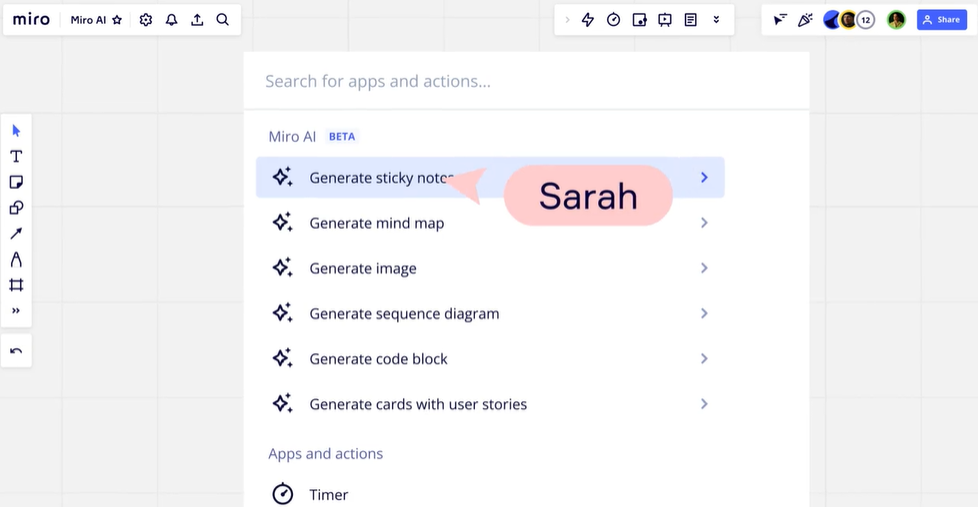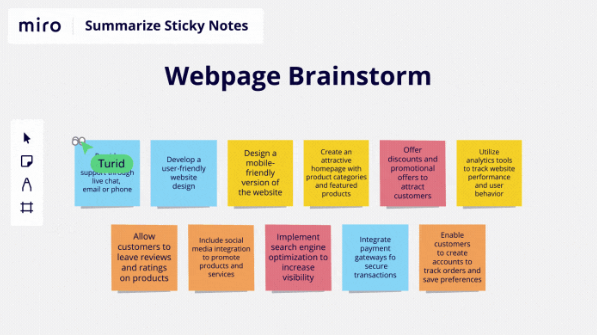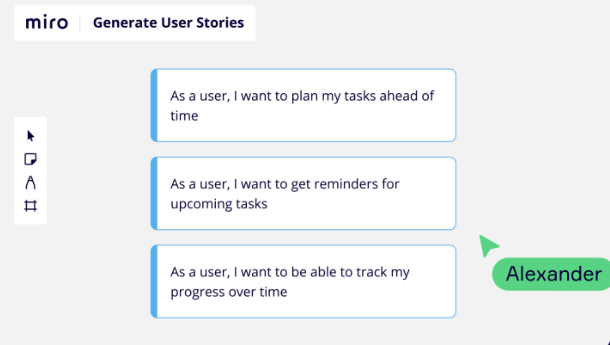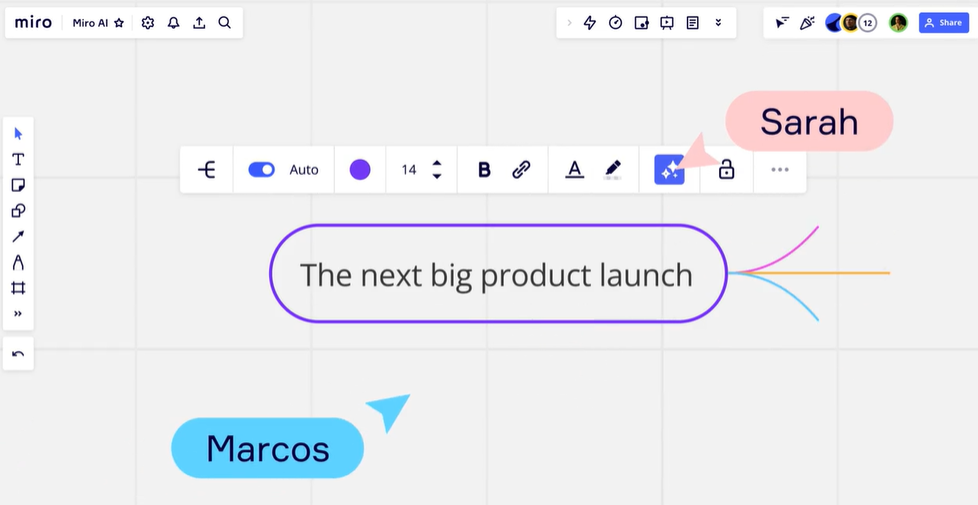A Deep Dive into Miro’s New AI: Pioneering Innovation for Collaborative Visual Workspaces
Miro, one of our favorite providers of digital collaborative whiteboard platforms, has once again raised the bar with the introduction of its innovative Artificial Intelligence (AI) feature. This highly anticipated addition to Miro’s platform enhances its usability and efficiency in a variety of applications, from design to project management to education. In the article below, we’ll explore the features of Miro’s new AI and its potential use cases, showcasing how this development could significantly alter how professionals, teams, and organizations collaborate and ideate. Watch my 1 minute Miro AI demo showing you what you can do!
Check out Miro Intelligent Canvas too for a fascinating application of AI across the whiteboard canvas.
Miro AI Actions and Features

Here’s a list from Miro of the actions that currently available. We demonstrate most of these in the video.
| Object | AI Action | Result |
| Sticky – single selection | Generate image | Creates an image from keywords in the sticky |
| Summarize sticky notes | Creates a sticky with a brief explanation of the sticky’s main concept | |
| Add similar sticky notes | Adds a pack of stickies with similar keywords / phrases | |
| Sticky – group selection | Summarize sticky notes | Creates a new sticky with a brief explanation of the stickies’ main concepts |
| Image | Remove background | Removes the background from an image |
| Mind map | Expand with questions | Generates a list of questions based on the keywords in the selected node |
| Expand with ideas | Generates a list of ideas based on the keywords in the selected node | |
| Expand with topics | Generates a list of topics such as benefits, challenges, and best practices based on keywords in the selected node | |
| Code block | Generate code from the selected widget | Generates a new code block with example code or instructions based on the question or phrase in the original code block |
| Card | Create user stories | Creates new user story cards based on phrases in the original card |
| Add acceptance criteria to the existing card | Adds numbered acceptance criteria in the details of the selected card |
How Miro AI Works

As you can see above, there are many features that make Miro’s AI tool a great way to innovate in your projects or hold better workshops and collaborative sessions. Beyond the Miro AI feature, Miro has been utilizing AI to technically make the customer or user experience productive and innovative. Here is some information about how the AI actually connects and works with the whiteboard tool:
- Auto-structuring: Miro’s AI introduces auto-structuring to digital whiteboards, allowing users to convert freeform thoughts and brainstorming sessions into structured workflows, diagrams, or mind maps. This feature makes for a more organized workspace, reducing the clutter typically associated with brainstorming or ideation sessions.
- Real-Time Collaboration Enhancement: The AI employs sophisticated algorithms to analyze the patterns and behaviors of collaborators. It can suggest improvements in real-time to foster more productive and harmonious team collaboration.
- Smart Suggestions: Based on previous user interactions and patterns, Miro’s AI can provide intelligent suggestions to users, such as recommending particular tools, offering design suggestions, or providing content recommendations.
- Content Recognition: This feature is designed to comprehend handwritten notes and sketches, making it easier to transform analog ideas into digital assets. It recognizes images, text, and even vague sketches, and then converts them into editable, searchable, and shareable digital content.
- Language Processing: Miro’s AI boasts natural language processing (NLP) capabilities, allowing the platform to understand, interpret, and respond to user commands and queries. This makes interaction with the digital whiteboard much more intuitive.
Different Use Cases of Miro’s AI

Here are just a few example use cases for Miro’s AI:
- Project Management: The auto-structuring feature can be a game-changer in project management. Project leaders can transform brainstorming sessions into structured project roadmaps, Gantt charts, or other organizational diagrams. The real-time collaboration enhancement feature can further improve team cohesion and productivity.
- Education: Educators can use Miro’s AI to enhance online learning experiences. Handwritten notes can be instantly digitized, and lessons can be structured automatically. Additionally, the language processing feature allows educators and students to interact more naturally with the digital whiteboard.
- Design Thinking: The smart suggestions and content recognition features can significantly improve design ideation sessions. Designers can sketch out their ideas, and Miro’s AI can digitize them and even provide improvement suggestions based on past interactions.
- Content Creation: For writers, journalists, and content creators, Miro’s AI can be invaluable. The AI’s language processing and smart suggestions features can assist in brainstorming sessions, turning raw ideas into structured content outlines.
Conclusion
Miro’s new AI represents a significant stride towards creating more intelligent, efficient, and user-friendly digital collaborative spaces. With its ability to facilitate auto-structuring, provide smart suggestions, recognize content, and enhance real-time collaboration, this tool is poised to transform how individuals and teams work across various fields. As Miro continues to pioneer new frontiers in digital collaboration, the possibilities for how this technology could be leveraged are expansive and exciting. We love using Miro’s whiteboard capabilities for design thinking and innovation, so a built-in AI tool is a great addition!
Learn more about Miro and how to use it for innovation and design thinking on our blog.
